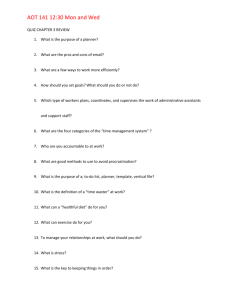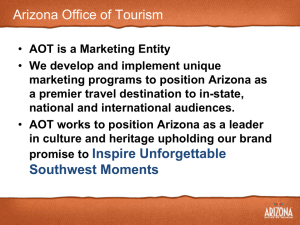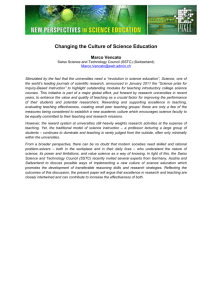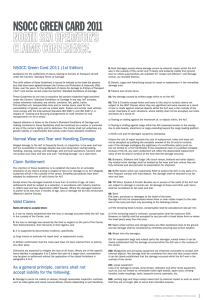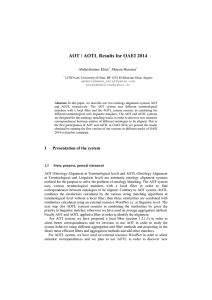SSPOT Development Plan and Schedule
advertisement
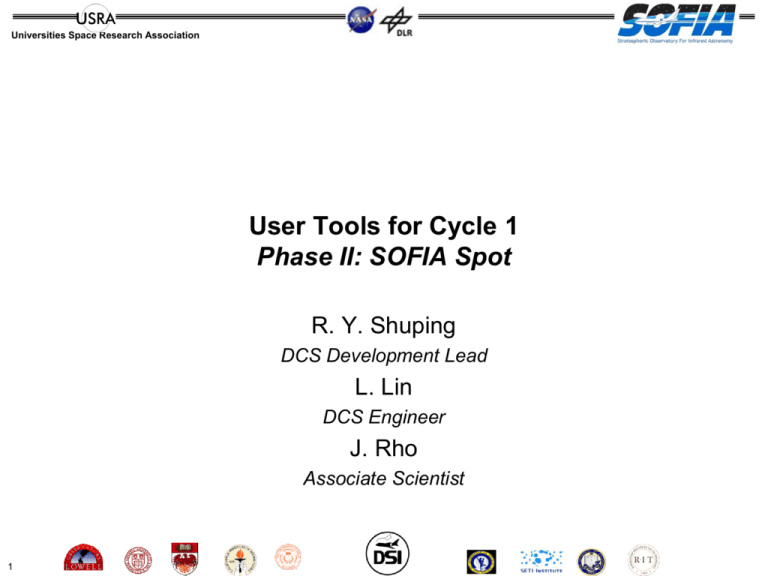
Universities Space Research Association User Tools for Cycle 1 Phase II: SOFIA Spot R. Y. Shuping DCS Development Lead L. Lin DCS Engineer J. Rho Associate Scientist 1 Universities Space Research Association Introduction • Observation planning for SOFIA is composed of two parts: – Phase I: Proposal Preparation (SPT, SITE) – Phase II: AOR creation/modification • Early decision was to not force GIs to create AORs as part of the proposal process. • Trade study of existing Obs Planning tools was conducted in 2001: included SPOT, SEA, OASIS, and the Gemini OT. • Trade study was reviewed in 2009 and decision was made by SMO director and ISD manager (Sept.) to go ahead with SPOT as the Phase II planning tool for SOFIA. 2 Universities Space Research Association Intro to SPOT • Development Effort: 6-12 FTE, 2 years before and 4 years after the launch • Capabilities: – Detailed observing strategy : detailed AORs including exact mapping strategy, chopping, nodding, slit selection etc. – Excellent Visualization Tool • Archival sky images (IRAS, MSX, 2MASS, etc) specified AOR • Depth of planned observations • Moving Target visualization with orbit parameters 3 Universities Space Research Association Development Overview • SSPOT development composed of two parts: – SSPOT application – AOT development and integration • SSPOT application development is part of existing DCS 2.0 plan and schedule: – Independent of SI team – Support from IPAC SPOT team – Subject to standard QA process (SCI-US-PLA-PM21-2011) • AOT development is parallel effort (until SSPOT app complete) – Depends on SI specification and team 4 Universities Space Research Association SSPOT Development Personnel • Lan Lin (< 1.0 FTE): SSPOT Development Lead – Application Development – AOT Integration • Li Sun (< 1.0 FTE): Database interface development • Jeonghee Rho (0.25 FTE): AOT specification and IPAC coordination – With support from USRA Scientists • SSPOT Science Working Group: – Charter: • Evaluate/recommend changes to GUI layout/design/functionality • Address science issues and provide algorithms (as needed) • Feature prioritization – Membership: Shuping (Chair), Rho, de Buizer, Vacca, Sandell, Andersson, Sankrit, Maureen, John V., L. Lin, Reach (visiting), Moore (visiting). 5 Universities Space Research Association Adapting SPOT to SOFIA: Challenges • Separate Phase II Planning: – Additional state management required – Synchronization with the SOFIA DCS Obsplan DB • AOT specification is fluid: – Software must handle frequent AOT updates, especially early on. • Details of focal plane overlays (e.g. PA) depend on exact time of observation; unknown at planning time. • SOFIA will have numerous AOTs over a long observatory lifetime: – Requires robust AOT and AOR versioning approach/system so that users can always upgrade old AORs for use with most recent version of SSPOT. 6 Universities Space Research Association Design Goals • User Experience – Familiar, Intuitive Interface – Feedback • Status, Help, Knowing where you are – Clarity • Smart defaults • Valid state • Limits – Network or Stand-alone – Ease of Use • Easy to learn • Easy to install • Easy to upgrade (both application and AORs) • Developer Experience – – – – 7 Use of Objected Oriented principles and design patterns Easy to modify existing AOT Easy to add instrument Easy to add instrument mode Universities Space Research Association SSPOT Application Design/Implementation Activities • • • • • • • • • 8 Develop ConOps and derived requirements (complete) Develop Prototype (complete) Develop/Update V&V Plan (in-work) Develop/Update Architectural Design (in-work) Develop Planning DB Interface (in-work) Update visualization functionality (chopping/nodding) Develop additional required functionality Develop/update test procedures for V&V Informal Testing Universities Space Research Association AOT Specification • AOT specification worked out with SI representatives for each mode, including: – – – – – Options Constraints Parameters Value ranges and defaults Conceptual diagrams as needed • Spec then included in SI-DCS ICD and implemented as formal XML. • Kickoff meeting with SI teams? 10 Universities Space Research Association AOT Prioritization for Cycle 1 • FORCAST – 2 position chop/nod (dithering) – Mapping • GREAT – Pointed (Chopping) – Mapping • FLITECAM Imaging • FORCAST Grism • FLITECAM Grism 11 Universities Space Research Association V&V Overview • All DCS V&V activities to be documented in V&V Plan for Segment 3 – V&V guidelines documented in SCI-AR-PLA-PM92-2009. • Verification carried out to ensure software meets its formal requirements or fixes SPRs (bugs). Methods: – – – – • Demonstration (functional, security, privacy requirements) Test (performance requirements) Inspection (mostly for SPRs) Analysis (rare) Validation carried out to ensure that software meets the needs of users in the operational environment. Methods: – Beta testing with representative users – Simulations (e.g. SIM6 in 2009) • • V&V Activities carried out in separate Test Environment independent of DCS Production Environment. Result of V&V activities: – Requirements status matrix updated – Existing SPRs updated – New SPRs generated (as needed) 12 Universities Space Research Association DCS Verification Overview • All DCS software (including SSPOT) subject to SW QA Plan and V&V Guidelines. • Standard verification activities for every DCS release: – V&V Plan updates (SV01, as needed) • Covered in Design Review – – – – – – Test Procedure updates (SV02, as needed) Dry-Run Testing Establish SW baseline: CCB Test Readiness Review Witnessed Testing (USRA SW QA) Generate Test Records (SV04) and Test Report (SW05) • Once verification activities are complete, NASA conducts FCA/PCA and issues change request. • Once change request is approved, software can be deployed to production environment. 13 Universities Space Research Association SSPOT Validation Planning • • SSPOT Validation Plan to be included in General DCS V&V plan for Segment 3. SSPOT Validation activities will involve Science and Mission Ops staff and should include: – SMO User testing against the SSPOT ConOps. – SMO exercises and simulations in preparation for Segment 3 phase II planning – Beta testing with SI teams and other outside users (under controlled conditions) • • • Results to be documented in Validation Test Reports and SPRS (as needed). Validation activities can be done anytime after formal baseline established (i.e. when the code is ready for formal test). Informal validation will also occur as part of development (i.e. as soon as functionality and AOTs are available) as risk reduction – no formal documentation required: – Demos with SPOT Science Working Group – Informal testing with SI teams 14 Universities Space Research Association SSPOT Development Schedule • • • • June: Delta Design Review June - Aug: Implementation and informal test Sept: Formal Testing Sept. 30: Release of SSPOT Beta (FORCAST TPCD) – SSPOT ready for ops simulations and exercises – SSPOT ready for integration with other AOTs 15 Universities Space Research Association AOT Implementation Schedule • May – October: AOT Specification and ICD updates • June – October: AOT implementation (XML) • October – February (2012): AOT integration with SSPOT – Assumes ~3 weeks per AOT – Including informal test with science ops and SI teams • March 2012: Formal V&V • March 31, 2012: SSPOT released with full set of AOTs for Cycle 1 Planning • April 2012: Cycle 1 Phase II planning begins Schedule is very tight: Very little margin for unexpected issues. 16 Universities Space Research Association Appendix: DCS Archive Status • • • All data from Cycle 1 (both raw and pipelined) will be ingested into the DCS Archive and made accessible via DCS web pages. Archive enforces proprietary periods and access controls. Status: – Database and storage systems complete – Ingestion functions ready, in operations now for Basic Science – Delivery functions complete, in operations now for Basic Science – Web access complete, but a number of user interface issues identified, to be resolved in time for Cycle 1 observations 17
